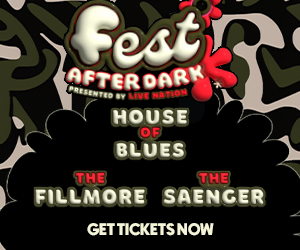 I’m in the process of reading an advance of Everything is an Afterthought, Kevin Avery’s biography and selected works of the music critic Paul Nelson. Reading Nelson’s writing reminds me how of the role that he and other music critics of the time – our own John Swenson included – played in creating the myth of New York City for me. In Hamilton, Ontario, a steel town 45 minutes southwest of Toronto, a place where people made and championed rich, literate music that rocked and was part of a music community that was glamorous and sexy sounded like heaven. One part of that was the New York Dolls (who Nelson helped get signed to Mercury Records when he worked there as an A&R man), who picked up the air of decadence from Andy Warhol’s Factory among other places; another was the small army of “New Dylans” – Springsteen, John Prine, Garland Jeffreys, Steve Forbert and Elliot Murphy among others. I was hooked before I started reading about CBGB’s and punk rock.
I’m in the process of reading an advance of Everything is an Afterthought, Kevin Avery’s biography and selected works of the music critic Paul Nelson. Reading Nelson’s writing reminds me how of the role that he and other music critics of the time – our own John Swenson included – played in creating the myth of New York City for me. In Hamilton, Ontario, a steel town 45 minutes southwest of Toronto, a place where people made and championed rich, literate music that rocked and was part of a music community that was glamorous and sexy sounded like heaven. One part of that was the New York Dolls (who Nelson helped get signed to Mercury Records when he worked there as an A&R man), who picked up the air of decadence from Andy Warhol’s Factory among other places; another was the small army of “New Dylans” – Springsteen, John Prine, Garland Jeffreys, Steve Forbert and Elliot Murphy among others. I was hooked before I started reading about CBGB’s and punk rock.
It’s a sign of the times – the mid-1970s – that people used the phrase “new Dylan” as if such a thing were possible, and when Nelson was advocating the New York Dolls to skeptical Mercury executives, he talked about them like an American Rolling Stones. I suppose artists like the Stones, the Beatles and Dylan emerged in such a way as to make it seem like more of each were possible, and that all you had to do was keep looking. It brings to mind the equally futile efforts on the part of record companies to find a new Nirvana after “Smells Like Teen Spirit,” which brought the alternative rock format into existence as labels’ rosters were filled with glosses on Nirvana that weren’t very Nirvana-like except for the loud-quiet-loud dynamics.
Springsteen’s the exception. Otherwise, the new Dylans largely underperformed. It took John Prine years to shake off that label and develop a more Americana and country-oriented career, while the others couldn’t get out from underneath a basic problem: they were many things, but they weren’t Dylan. Unfortunately, with the exception of Forbert, it’s hard to even know what Murphy and Jeffreys’ champions heard in them because they seem to occupy one of the niches not even the Internet wants to preserve. You can only get Jeffreys’ excellent (as I remember, anyway) debut, Ghost Writer, as part of a three-album comp, and none of Murphy’s first four albums are in print, nor are they available at eMusic or Rhapsody. I wanted to revisit Murphy enough that I found a torrent of his fourth album, Just a Song from America, and grabbed it, but it’s sad to have to go through the web’s back alleys to find out that an artist even existed, much less music from his career-defining period.
 Listening to the album, it’s clear that the new Dylan comparison has far more to do with the significance of Dylan to Nelson and those who grabbed on to the shorthand than Murphy’s art itself. Murphy was as obviously a city mouse and Dylan was a country one. Murphy’s formal education was his strength and weakness, while Dylan has always sounded like an autodidact, someone whose education was largely obscured by his talent for integrating it into vernacular expressions. Still, the phrase – and Dylan – had enough currency that three labels took a shot on Murphy, even though he didn’t sell enough for anyone to hang on to him.
Listening to the album, it’s clear that the new Dylan comparison has far more to do with the significance of Dylan to Nelson and those who grabbed on to the shorthand than Murphy’s art itself. Murphy was as obviously a city mouse and Dylan was a country one. Murphy’s formal education was his strength and weakness, while Dylan has always sounded like an autodidact, someone whose education was largely obscured by his talent for integrating it into vernacular expressions. Still, the phrase – and Dylan – had enough currency that three labels took a shot on Murphy, even though he didn’t sell enough for anyone to hang on to him.
Reading Nelson on Murphy and remembering the effect Nelson and other writers of that era had on me makes me wonder if anything we write similarly creates an image of New Orleans in readers’ minds, and if so, what image? Admittedly, we’re writing in a different time. By now, we know that New Fill-in-the-Blanks aren’t coming, and with the death of the monoculture, we likely wouldn’t know if a new Dylan or Stones actually existed because he/she/they’d never rise beyond the level of YouTube sensation, which would make everybody skeptical of how big and good they really are. Still, if our writing collectively created a sense of place, that might be the best thing we could do, whether it’s exactly right or not.




